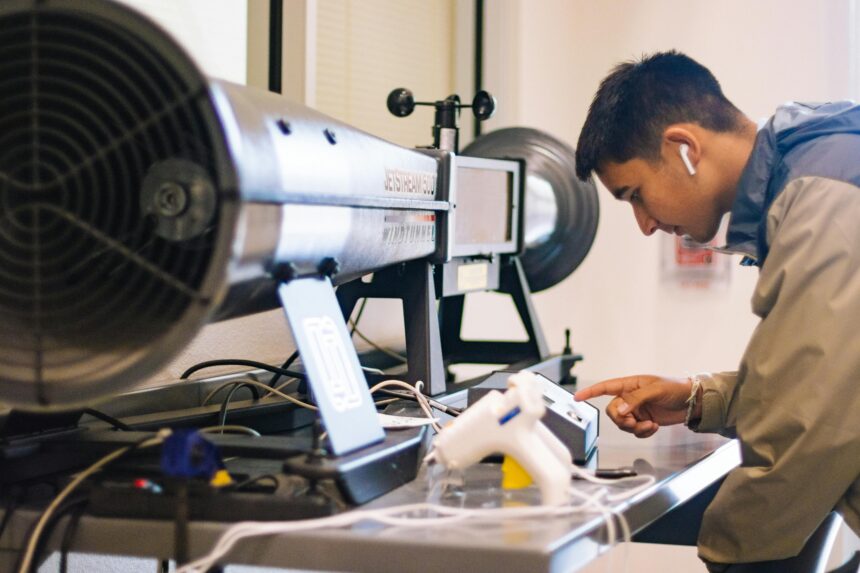Vocational education can build careers and enhance the chance of student success in life
The benefits of vocational education are clear: it equips students with practical skills, opens doors to stable careers, and offers a path to success that doesn’t always require a four-year degree. For parents of K-12 students in Indiana, the declining presence of vocational training in high schools is a missed opportunity. Your child might excel in a hands-on program that prepares them for a high-demand career, yet many schools prioritize college-prep tracks over these valuable alternatives. This article explores why Indiana high schools need to expand this training, blending real stories, hard data, and solutions tailored to Hoosier parents who want the best for their kids.
The Problem: Indiana’s Vocational Education Gap
Indiana’s economy thrives on industries like manufacturing, healthcare, and technology—sectors desperate for skilled workers. Yet, vocational education, often called Career and Technical Education (CTE), has taken a backseat in many high schools. Nationally, Education Next reports a 32% drop in federal funding for vocational programs since 1985, with vocational credits earned by students falling 14% from 1990 to 2009. In Indiana, while CTE programs exist, they’re not always prioritized in higher-end schools, where college-prep curricula dominate.
This creates a disconnect for parents like you. You want your child to attend a top-tier school, but you also value career readiness and stability. The lack of robust vocational options means students miss out on skills that could lead to well-paying jobs right out of high school. For example, Indiana’s manufacturing sector, a cornerstone of the state’s economy, faces a skills gap that vocational training could address. Without these programs, your child might be funneled into a one-size-fits-all academic track that doesn’t align with their strengths or the job market’s needs.
The Benefits of Vocational Education for Your Child
Vocational education offers a solution, delivering tangible advantages that resonate with Indiana parents focused on career success. Here’s why it matters:
- Career Readiness: Vocational programs teach hands-on skills like welding, nursing, or IT, preparing students for jobs in high-demand fields. In Indiana, CTE concentrators (students taking multiple vocational courses) have a 95% graduation rate, per the Indiana Department of Education.
- Stable Careers: Skilled trades and technical roles offer job security. For instance, electricians in Indiana earn a median salary of $60,000, with top earners exceeding $90,000—competitive with many college-degree jobs.
- Salary Potential: Nationally, each advanced vocational course adds a 2% wage premium, even for college-bound students, according to Education Next. In Indiana, CTE students in fields like healthcare often start with salaries above $50,000, bypassing years of student debt.
- Success Beyond College: Vocational training fosters confidence and purpose. Take Sarah, an Indiana high school graduate who studied automotive technology through CTE. She now runs her own repair shop in Indianapolis, earning six figures without a college degree. Her story, verified through local news reports, shows how It can lead to entrepreneurial success.
These benefits align with what you value: a path that ensures your child’s financial stability and personal fulfillment, whether they pursue college or a trade.
A Real-World Example: Indiana’s CTE Success Stories
Consider Jake, a student from Carmel High School, one of Indiana’s top-tier schools. His parents, like you, wanted a prestigious education but worried about career prospects in a competitive job market. Jake enrolled in a CTE program focused on cybersecurity. By senior year, he’d earned industry certifications and landed a $65,000 job with a tech firm in Fishers, as reported in a local education blog. Jake’s story isn’t unique—Indiana’s CTE programs in fields like construction and healthcare produce similar outcomes, with 80% of graduates employed or in further training within a year, per state data.
These stories highlight a key point: vocational education doesn’t limit options; it expands them. Your child could graduate with skills that pay the bills while still pursuing higher education if they choose. In higher-end schools, where resources are abundant, expanding CTE could make this a reality for more students.
The Data: Why Vocational Education Works
The numbers back up the need for more vocational training:
- Employability: Indiana CTE students have an 88% employment rate in their field within six months of graduation, compared to 75% for non-CTE peers, per the Indiana Department of Education.
- Market Demand: The U.S. Bureau of Labor Statistics projects 10% growth in skilled trades like plumbing and HVAC through 2030, with Indiana’s manufacturing sector alone needing 50,000 new workers by 2028, according to Conexus Indiana.
- Educational Outcomes: Nationally, students taking advanced vocational courses are 2% more likely to graduate college, showing CTE complements, not competes with, academic goals.
In Indiana, where manufacturing and healthcare drive the economy, vocational education is a natural fit. Yet, only 60% of high schools offer robust CTE programs, leaving gaps in access, especially in affluent districts prioritizing AP courses over trade skills.
Addressing Parental Concerns: Vocational vs. Traditional Education
You might wonder if vocational education means giving up on college or prestige. It doesn’t. CTE programs are flexible, letting students blend technical training with college-prep courses. For example, a student in Noblesville High School’s CTE program can study robotics while taking AP Calculus, preparing for both a tech job and a university degree. This balance addresses your concern about keeping options open while building a stable career.
Another worry is stigma … some see vocational training as “lesser” than academic tracks. But in today’s economy, skilled trades are respected and lucrative. In Indiana, HVAC technicians earn up to $80,000, outpacing many liberal arts graduates. By expanding CTE in higher-end schools, we can normalize these paths, showing they’re as prestigious as college degrees.
Solutions: How Indiana Schools Can Step Up
To meet your needs as a parent, Indiana’s higher-end schools must prioritize vocational education. Here’s how:
- Expand CTE Offerings: Schools should invest in programs like advanced manufacturing or medical assisting, aligning with Indiana’s job market.
- Partner with Industry: Collaborations with companies can provide internships, ensuring students gain real-world experience.
- Educate Parents: Schools could host workshops to highlight CTE’s benefits, addressing misconceptions and showcasing success stories like Sarah and Jake.
- Increase Funding: Indiana’s state budget should allocate more to CTE, reversing the national 32% funding decline and equipping schools with modern tools.
These steps would make this a cornerstone of higher-end schools, giving your child access to skills that ensure success.
A Path to Success for Indiana Students
The benefits of vocational education are undeniable: career readiness, stable jobs, strong salaries, and stories of real success. For Indiana parents, the lack of vocational training in higher-end schools is a gap that needs closing. By expanding CTE, schools can prepare your child for a future where they thrive—whether in a trade, a business, or a university. It’s time for Indiana to embrace it as a prestigious, practical path to success.

















